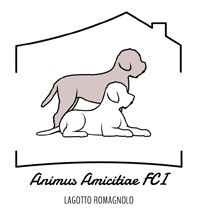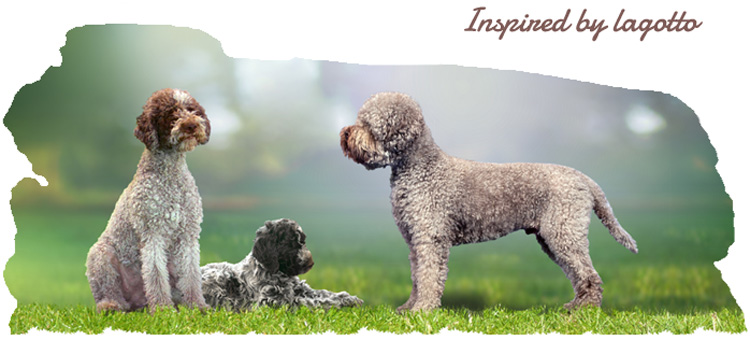


|
 |
|
|||||||||
|
|
|||||||||||
|
|
Facts and myths about Lagotto
HALF-TRUTH: Lagotto is ideal for allergy sufferers
Lagotto is considered to be a non-allergic breed, as other breeds that do not have a regular moulting cycle. It must be remembered that it is not the coat itself that causes the allergy, but the epidermis and secretions, for example the dog's saliva. Allergies are always very individual diseases and the responsible breeder cannot guarantee that the dog will not cause allergic reactions. You should always check the man's behavior in direct contact with the dog. If necessary, we send samples of our pets' coat.
HALF-TRUTH: Lagotto are suited for dog therapy
In the dog's work - a dog therapist, the most important is character, temperament, not the breed. A dog of any breed can work in this way. It is also suited for a crossbreed, if it has a predisposition to it. We know Lagotto that work as dog therapists. However, these are rare cases, and dogs of this breed are considered too sensitive to such activities. Due to the interest in this function, from 2018 we perform mental tests on puppies. However, even they do not guarantee that the dog will work as a therapist. They let you rather exclude those that are not suited to it. The tests done after the dog's maturation are much more certain.
MYTH: Lagotto is a dog for everyone, easy to breed
It is true that Lagotto learn quickly, but it does not mean that they are easy dogs for everyone. They learn what the guardian wants, and even faster what they should not learn. They require a lot of work and consistency. They are stubborn and patient in finding weaknesses of caregivers, additionally they have a very good memory. Of course, this may be the first dog in the family. Provided that the whole family is aware of what awaits.
MYTH: Lagotto does not have coat, they have hair
The advertising slogan is that some breeds have hair (implicitly human hair) so it is not sensitizing. The dog always has a coat that is typical of a domestic dog (Canis familiaris). The man has human hair. No dog breed has "human hair". Silky long hair of a Yorkie, Maltese or curly Lagotto coat are still dog fur. The only difference in relation, for example, to the German Shepherd, the Polish Hound and others is that they do not have a regular moulting cycle. They do not periodically change the coat, it does not fall out e.g. in the spring. Dogs of those breeds "lose" their coat regularly throughout the year. Individual hair has a definite time, then falls out and a new one grows. This old one falling out can be simply combed out, and the long Lagotto coat also requires haircut every 6-8 weeks.
MYTH: Lagotto is great for families with small children
For families with children under 5 years old, we do not recommend any puppies, also Lagotto. It must be remembered that a puppy (a dog child) gets to know the world and its principles, has no sense of its own abilities, does not control its own body. Milk teeth are really sharp, and the puppy cannot control the strength of the jaws. As playing with dog siblings can be a good lesson for the rest of your life, it may be harmful to a child. On the other hand, the puppy is not mentally stable and any unpleasant events leave their mark. It is not only about extreme behavior (e.g. brutality), but also behavior that can be difficult to explain to a small child: that the dog needs rest, peace, that it does not like squeezing or long stroking. Not to mention putting fingers in the eyes or ears. The puppy requires work, time and attention that would have to be shared between it and the child. In the case of Lagotto, you must remember that these puppies are extremely lively. Of course, families aware of these issues and able to provide the right conditions (including time and attention) for both the child and the puppy, can afford a small dog. However, you cannot assume that “Lagotto is ideal for families with small children".
MYTH: Lagotto does not have a hunting instinct
The Lagotto was originally a hunting dog, and fished fowl and arrows from the water. With the passage of time and change in the profile of work, their hunting passion has been limited. However, sometimes this traditional usability can manifest itself. It is not as troublesome as with breeds that are hunting, but madness about balls, cones or even strong interest in birds can still appear. It should also be remembered that the smell of wild animals, so different from smells found in human habitats, can fascinate a dog very much.
| |